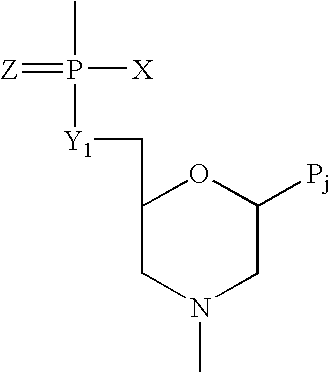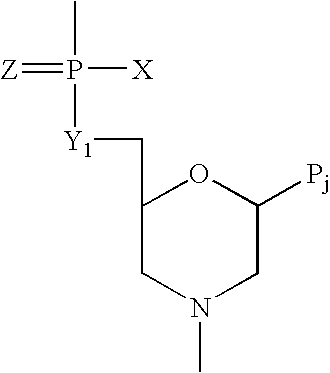Antisense composition and method for treating cancer
a technology of antisense and composition, applied in the field of compounds and methods for treating cancer, can solve the problems of reducing or discontinuing chemotherapeutic agents, reducing the effectiveness or the effect of chemotherapeutic agents, and reducing so as to confirm the specificity of binding of candidate antisense oligomers and reduce the formation of adenomatous polyps. , the effect of potent anti-carcinogeni
- Summary
- Abstract
- Description
- Claims
- Application Information
AI Technical Summary
Benefits of technology
Problems solved by technology
Method used
Image
Examples
example 1
SNAIL is Overexpressed in Human Colon Cancer
[0183] SNAIL immunoreactivity was not detected in the uninvolved mucosa despite marked staining in the tumor sections on the same slide. Dramatic SNAIL expression was noted in most but not all colon cancer samples. The specificity of the staining is supported by negligible background staining in the stromal elements and also through the employment of negative controls (incubation with non-immune sera alone). Moreover, in the tissue array, there were negative tumors juxtaposed against markedly positive tumors. We corroborated our findings by probing a subset of colon cancer slides with a second primary antibody (raised to a different internal epitope of human SNAIL) and this yielded comparable results.
[0184] Scoring of slides by a gastrointestinal pathologist indicated that SNAIL was present in 78% of tumors (46 / 59). The utilization of a tissue array provided reliable quantitation by mitigating the batch-to-batch variability common in imm...
example 2
The Transcriptional Repressor SNAIL Regulates E-Cadherin in Colon Carcinogenesis and During Chemoprevention
[0186] Loss of the tumor suppressor gene E-cadherin is important for initiation and progression of colorectal carcinogenesis. Moreover, we and others have reported tha E-cadherin induction is a common theme in chemoprevention of colorectal cancer (CRC). However, the mechanism for epigenetic silencing of E-cadherin and its reseversal by NSAIDS remain unclear. In several tumor types (E.g. beast, melanoma, hepatomas), upregulation of the transcriptional repressor SNAIL has been implicated in the epigenetic E-cadherin loss. Therefore, the role of SNAIL in colon carcinogenesis was investigated.
[0187] For chemopreventive studies, we treated the human CRC cell line HCT-116 with sulindac sulfide (100 μM) or vehicle for 3 days and analyzed SNAIL and E-Cadherin by RT-PCR. In order to evaluate frequency of SNAIL overexpression in human colon cancer, we immunohistochemically probed a tis...
example 3
Selective Downregulation of Transcriptional Suppresor SNAIL Decreases Intestinal Tumorigenesis in APCMIN Mouse
[0190] Upregulation of the transcriptional repressor, SNAIL has been shown to impart a more aggressive phenotype in a variety of human cancers including breast. While little is known on SNAIL regulation in colorectal cancer (CRC), we have observed that SNAIL is overexpressed in 80% of CRC and is downregulated by chemopreventive agents such as NSAIDS and Polyethylene glycol. In order to investigate the importance of SNAIL in CRC development and prevention, we investigated the phenotype of the APCMIN mouse model in which SNAIL was selectively downregulated. The APCMIN mouse (MIN) is a useful model system to study colon carcinogenesis as they are genetically determined to develop colon cancer (Moser, Pitot et al. 1990; Corpet and Pierre 2003).
[0191] Sixteen MIN mice (9-10 week old) were randomized to daily i.p. injections for 5 weeks with either saline or anti-SNAIL phosphoro...
PUM
| Property | Measurement | Unit |
|---|---|---|
| Tm | aaaaa | aaaaa |
| Tm | aaaaa | aaaaa |
| Tm | aaaaa | aaaaa |
Abstract
Description
Claims
Application Information
 Login to View More
Login to View More - R&D
- Intellectual Property
- Life Sciences
- Materials
- Tech Scout
- Unparalleled Data Quality
- Higher Quality Content
- 60% Fewer Hallucinations
Browse by: Latest US Patents, China's latest patents, Technical Efficacy Thesaurus, Application Domain, Technology Topic, Popular Technical Reports.
© 2025 PatSnap. All rights reserved.Legal|Privacy policy|Modern Slavery Act Transparency Statement|Sitemap|About US| Contact US: help@patsnap.com



